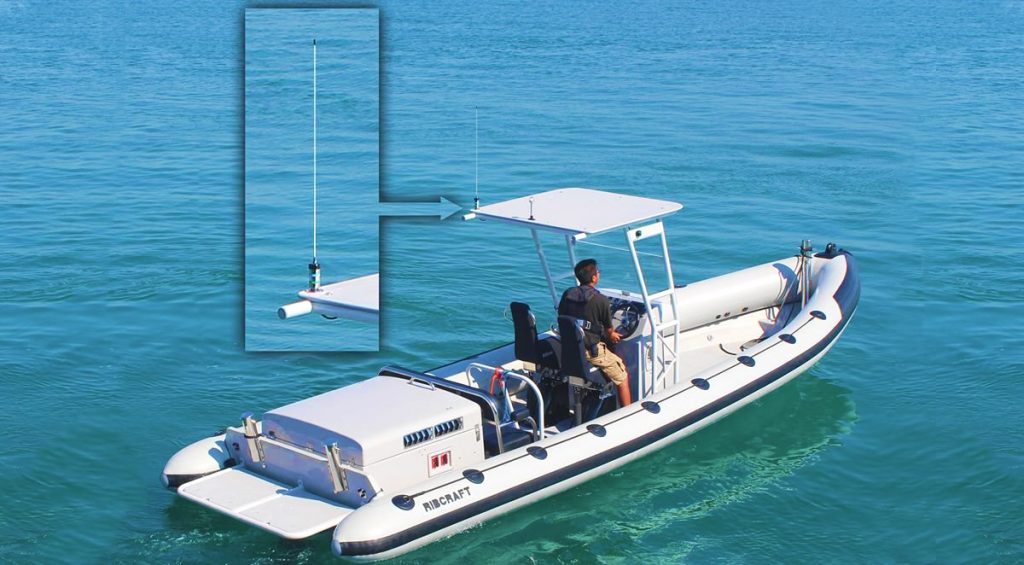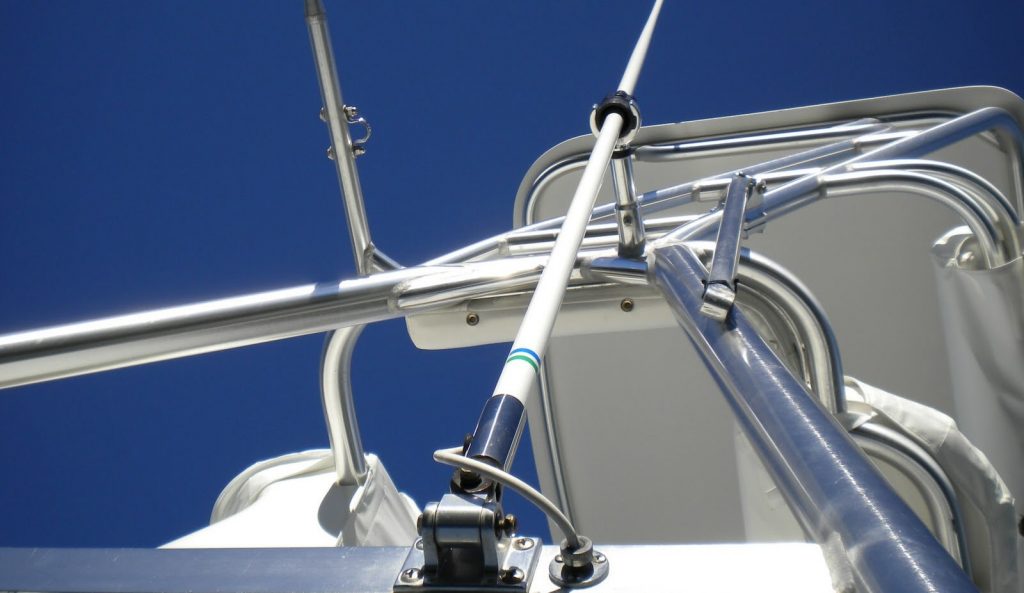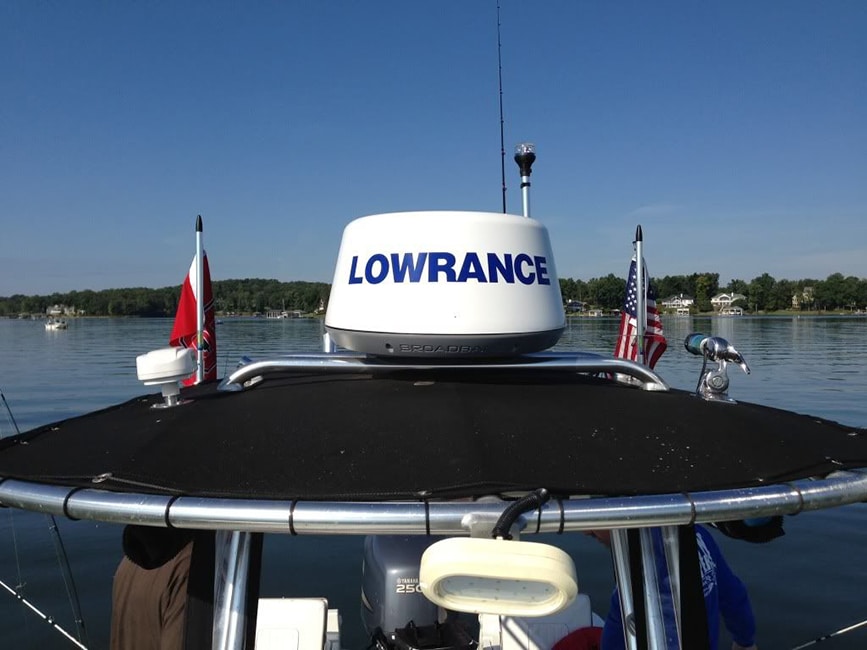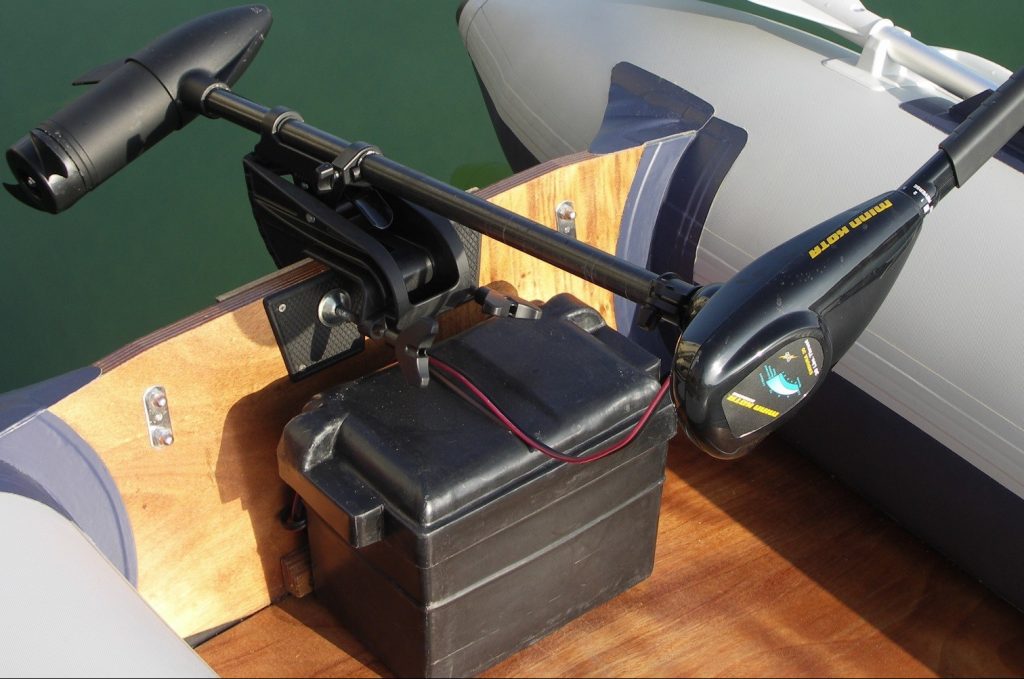

Very high-frequency waves, denoted as VHF, are in the 30 to 300 MHz range, and you would need a VHF antenna to not only detect them but also to decipher the messages they carry. Often you find these devices being used for digital audio broadcasting with the best VHF antennas even being able to receive television signals. In another scenario, you may find them being used for two-way land radio systems. These are common to police, military, ambulance services and help maintain communication between them. Also, if you own a boat, you may have to install one of these antennas so you can communicate with the coast guard or with other vessels on the water. Nevertheless, you could get a VHF antenna to boost either your TV or FM radio reception.
While reviewing VHF antennas, what matters most are the features, as that determines what ways you can use the device. The signal gain is on of the essential things you look out for. For people unfamiliar with the term, it means the antenna’s ability to amplify the signal it gets. As such, the higher the signal gain, the better. Construction is also key, depending on where you are going to install the antenna. Boats need stronger materials due to the constant motion and wind resistance. Length also makes a compelling case on whether to buy an antenna. Remember VHF antennas may to a point rely on lines of sight, and with a longer antenna, you have more exposure.
If you are shopping for one of these gadgets, some of the best VHF antennas can be found below. You might appreciate the effort and countless hours that were put into surfing manufacturer sites and acquiring information that can be used to compare each item with other prospective antennas. Consequently, we save you the strain of having to go through the same process with the only catch being that you read through to the end of the article. What you get from doing so is a table that ranks and even highlights the best features of each antenna. Also, in-depth reviews are included ensuring you have as much information as possible. Lastly, a buying guide helps you make better decisions when choosing the best VHF antenna for your needs.
Shakespeare is a leading manufacturer in the industry you are bound to see the name come up a few times in our VHF antenna review. Having already featured in our first option of the day, the second one also happens to be from the same manufacturer. Nevertheless, some key disparities differentiate this model from other Shakespeare models from the list. The most obvious is, of course, the length of the device. Given that the Shakespeare 5104 Centennial VHF Antenna only elongates about 4 ft. it serves to position the 6225-R Phase III VHF Antenna as a better option with regards to size as it measures 8 ft. As will be discussed below, lines of si ght are essential in transmitting VHF signals, and this device does more than an excellent job of remaining visible.
Components that make up the construction of this device include a silver conductor on the outside of the device. On the inside copper material features and as such you are almost certain that signals will be of a crystal clear quality. Nevertheless, at such a length the antenna would easily break at high speeds which are typical for boats. However, the manufacturer already accounted for the wind speeds before they decided to include a fiberglass Radome and an ethafoam spacer. These serve to bolster the device against breaking when wind currents get too intense.
The stainless-steel ferrule serves its dual purpose of holding some of the components of the device together as well as acting as a mounting sleeve. You would still have to mount the antenna with the Shakespeare 4187 ratchet mount. Another area where this device pulls one up over its predecessor is with signal gain. This model features 6dB which is twice that of its predecessor. Also, the cable length is 20 ft, which means more reach and more installation options. All these and eight years’ worth of warranty coverage would make anyone consider making this their antenna purchase.
Shakespeare delivers yet another superb option for you to pick out from the store. With 8 feet total length this is one of the longer options featured on the list. It’s, therefore, no surprise that a radome is included. This refers to a protective casing over the antenna that does not even interfere with the signal. As such, you can mount the device wherever you want without worrying about whether the weather will be bad that day. Another thing to write home about is the signal gain. You want a clear, crisp sound where your communication is involved, and it helps to have 6 dB signal gain doing most of the heavy lifting.
When you are looking for a place to mount your antenna, you will begin to appreciate the 20 ft. cable that you have been given with the purchase. This makes it so that you position the antenna anywhere you want and still not have to move your other communication equipment. You might even have to fold some of the excess cable and store it out of sight.
Another positive attribute of buying this piece of equipment is the five-year warranty. While cheaper than the Shakespeare 6225-R Phase III VHF Antenna this is still a rather expensive option and to have it repaired at no extra cost for the next five years after purchase makes it more worthwhile.
The Shakespeare 5104 Centennial VHF Antenna would be an ideal pick for many shoppers for various reasons. One is the 4 ft. length of the antenna. If you are looking for better signals, of course, longer is better, but if you can get the same performance from a shorter model, then you are good to go. From the same antenna, you get 3dB signal gain. In layman’s terms, the antenna amplifies up to three times the VHF signal it gets. Also, the maximum input power should affect the overall quality of reception you get whatever the use scenario.
Some elements that make up the device are brass and copper. With the former only having about 44% of the electrical conductivity of the latter it falls on the copper components to do most of the heavy lifting. You should also be interested to know the cable length that you get with the antenna. Fifteen feet cable length is, so you have even the freedom to cut it where the antenna and the electrical appliance you want to use it with are nearby. Another piece is the ferrule which helps hold all elements of the device together at the tip. With this device, you get chrome plated ferrules with every purchase. You may have to purchase an additional mount, so you can attach the device to the hull of your boat or wherever it is you want your antenna to feature. Also, there are recommendations that you use the 5187 or the 4187 ratchet mounts produced by the same manufacturer. If you do this, the signal integrity, as well as the device integrity, is likely to remain top-notch for quite a while.
One of the more affordable devices on offer is the Tram 1607-HC VHF Antenna. What you get from this purchase is a four feet antenna that is solidly made for your communication needs. Having been made of fiberglass, the device is likely to hold its own even in windy conditions. As such, you are free to mount it wherever you want, as you firmly attach it to a strong base. We also like that you won’t have to buy an extra mount as the Tram device comes with its own. The nylon ratchet mount only requires that you be able to screw the antenna onto its preferred position using the slots provided.
At the device’s current length you would expect that it delivers a signal gain of at least 3 dB, and that is absolutely correct. While other products may be able to provide a higher signal gain, this is still good value for money. One of the more impressive aspects of purchasing this model is the cable length. Twenty feet in most cases is more than enough and with a bit of know-how and instructions provided installation should be a breeze. You would expect coverage of all marine band frequencies and the Tram 1607-HC VHF Antenna delivers quite well on this front.
Our last option of the day would have to be the shortest antenna yet. The Shakespeare 5241-R VHF Antenna stands at only three feet. As such, it is recommended that you only use this device with compact boats. The sealed-in copper wire does a rather good job of transmitting signals in the airwaves to the receiver. This is aided by the 3 dB signal gain. Besides, the device incorporates a stainless-steel whip whose sole purpose is to provide stability for the device even at high speeds.
Also, the ferrule is a chrome-plated brass canister through which the cable is attached to the device. If you have any hopes of using the device, you are better off choosing a mount with a hole in the middle. This allows for the cable to be passed through without affecting the integrity of the mount or the antenna. This is where options like the 4188-S rail mount provided by the same manufacturer come in. A word of caution is that you will have to pay extra for the mount as it comes as a separate purchase. In addition to the above, a Shakespeare device would be incomplete without a warranty, and this particular model allows for up to two years of coverage.

Here you will see terms such as the maximum input power and the signal gain. Where the former is concerned, the figures are depicted in watts and represent a range of power levels that will allow the device to work optimally. The mentioned figure is the limit, and anything below that is acceptable. Every other wattage point above that may cause the device to malfunction. Of course, different devices have different maximum input power levels.
The Shakespeare 5241-R VHF Antenna is an example of a device that allows for up to 50 watts maximum power. Any power levels above that are unacceptable. As such, this product could be one of the best VHF antennas for small boat usage as they rarely require the use of high levels of power. On the other hand, a yacht may be better served by a product with a higher power rating. The Shakespeare 6225-R Phase III VHF Antenna can even handle 150W of power all the while still being reasonably competent.
Another term to look out for is signal gain. Often this is the device’s ability to amplify the signal received before it gets to the output. Typical values are 3dB such as is the case with the Shakespeare 5104 Centennial VHF Antenna and 6dB expressed in the Shakespeare 5225XT Galaxy VHF Antenna. Higher figures will mean a better reception, and so you should look for devices with the highest signal gain possible. However, for some of these devices, it may be unnecessary if the signal you receive is always strong enough and doesn’t require much amplification.

In another scenario, you might be using the device on a vehicle. These are known for their high speeds that result in wind resistance. If the device is flimsy, then it is all but guaranteed to break. Consequently, boat and even car owners should look out for materials that won’t break, such as fiberglass. Some of these devices also feature a radone that serves as a protective cover over the innards of the machine. This is visible with the Shakespeare 5225XT Galaxy VHF Antenna.
With mobile VHF/UHF antennas, the pricing varies quite a lot. Budget options can cost you less than 50 dollars while their more expensive counterparts can cost you above 200 dollars. One critical determinant in whether you buy an antenna is your financial capability. Where you feel you can afford the most expensive item in the market, there is no harm or foul in making the purchase. However, you still have to insist on getting value for money. It doesn’t make sense to buy a 150 dollar gadget while another exists at 70 dollars that has the same capabilities.
Also, check what the manufacturing company has to say about the warranty. Terms vary with some options giving only money-back guarantee for a short time. Other antennas can give one-year, two-year and even up to eight-year warranties. A rule of thumb is that the longer the warranty, the longer the device is likely to last without being damaged. Besides, even if it doesn’t last as long, you can still get repairs and replacements for free during this time.
The Shakespeare 6225-R Phase III VHF Antenna would be the first pick for many despite the cost being rather extravagant. People are willing to pay more money to get good value, and this device gives a prime example of that phenomenon. Construction-wise the device is of a solid build and will, therefore, hold its own against what you would call adverse conditions. At the same time, this guarantees the longevity of the antenna. In addition to that, the long-range VHF antenna outperforms most of its counterparts in terms of signal reception.
Runners up for selection would have to be the Shakespeare 5225XT Galaxy VHF Antenna. This is still costly though by a bit less than the phase III. Nonetheless, buyers are unlikely to regret buying this tool. You still get an eight-foot body and signal strength similar to that of the editor’s choice. Main differences are found in the cable length provided as well as warranty terms. In essence, this is just a more affordable alternative to the Shakespeare 6225-R Phase III VHF Antenna.
The Tram 1607-HC VHF Antenna can also be an excellent option to pick out from the fray. The tool is reasonably affordable with a few perks to its name. The construction being fiberglass is solid, and although the length of the device is small, it would still make a substantial investment for marine use. Again you would have to be acutely aware of your needs before going shopping for an antenna. Also, getting a few other antenna choices, just in case you don’t get your first pick is ideal.





